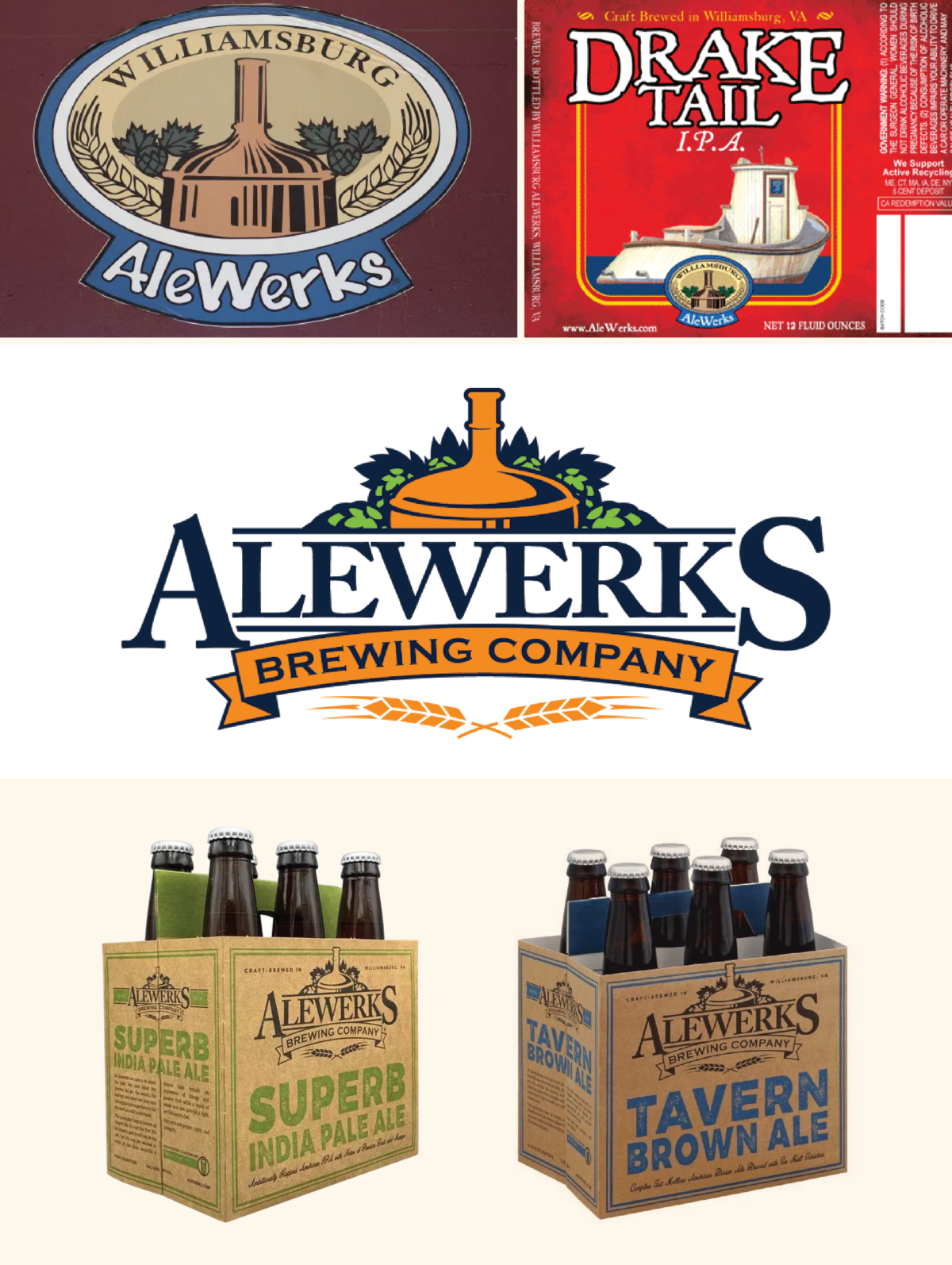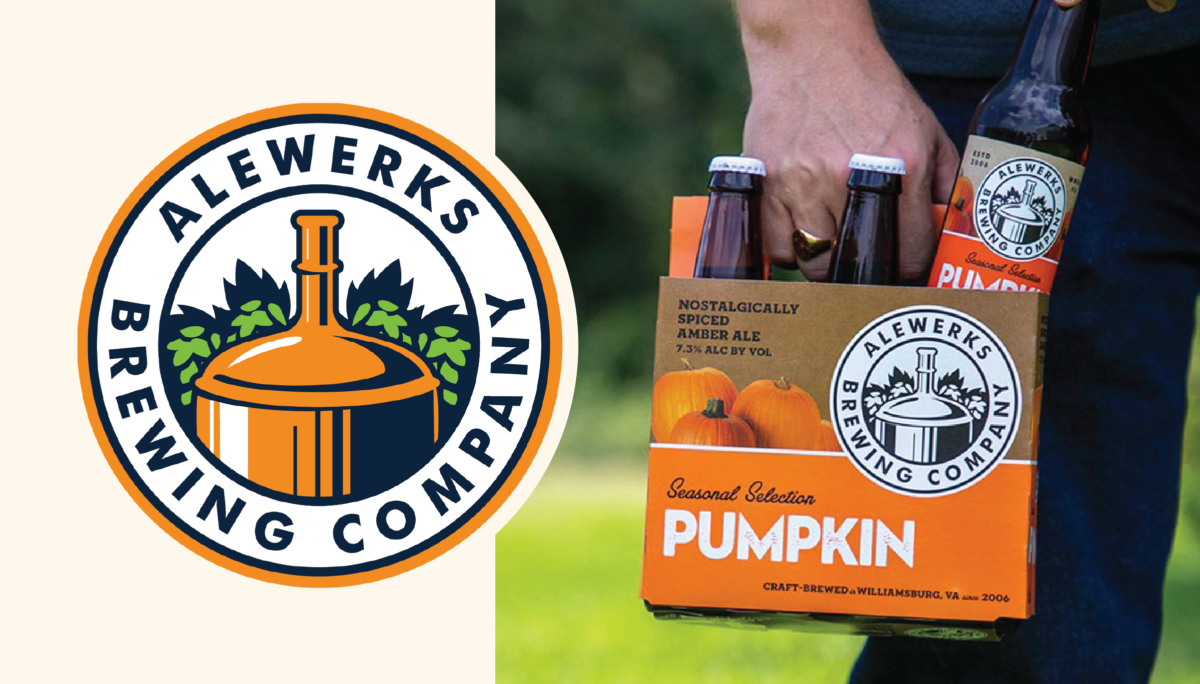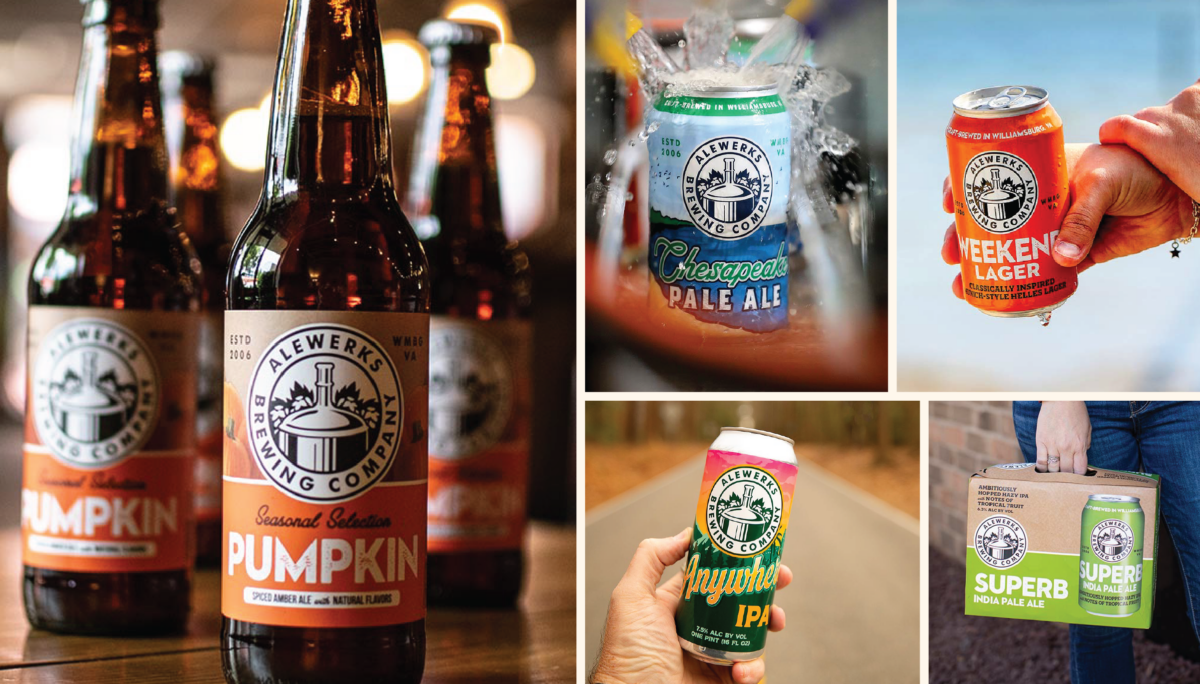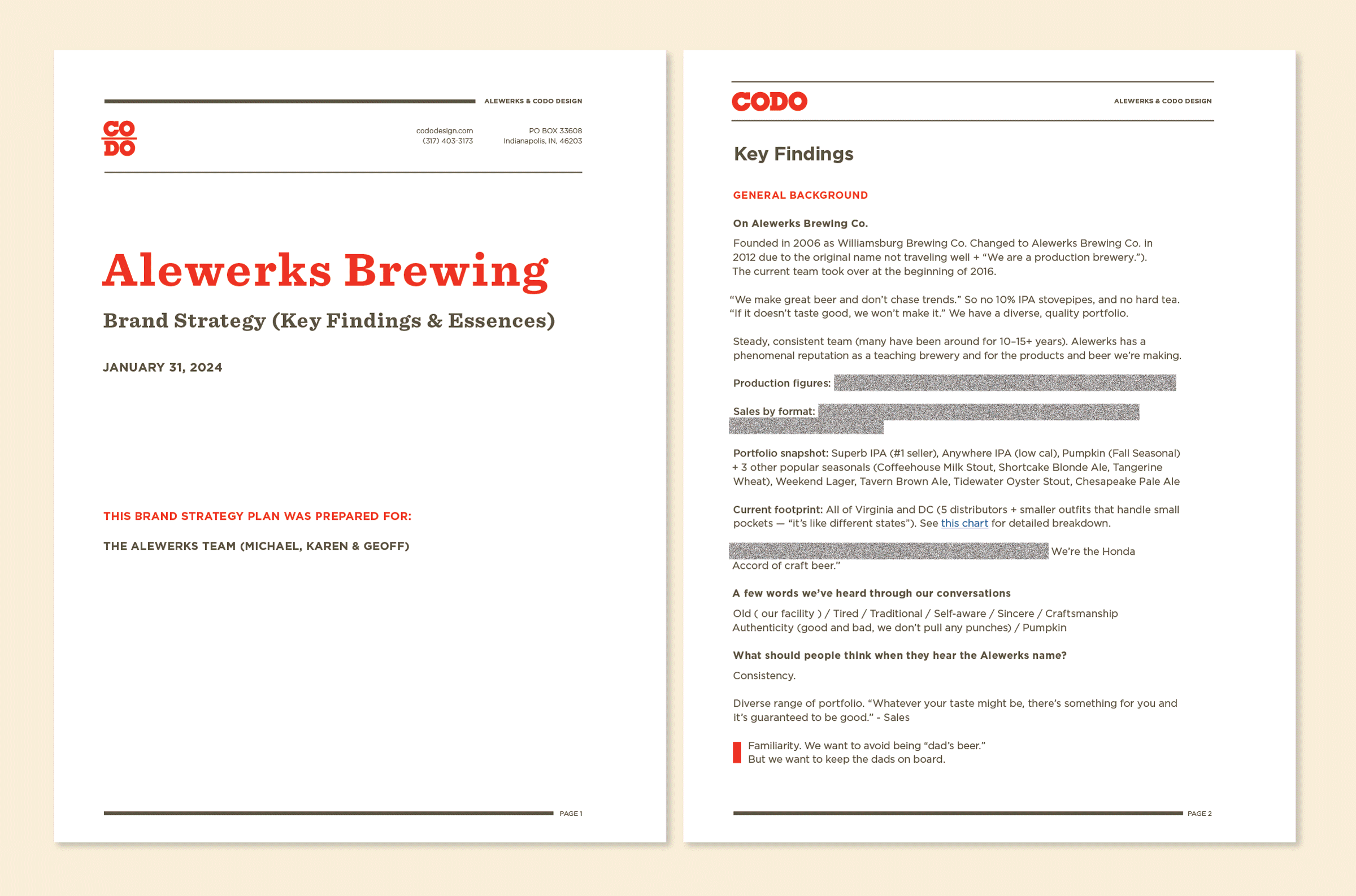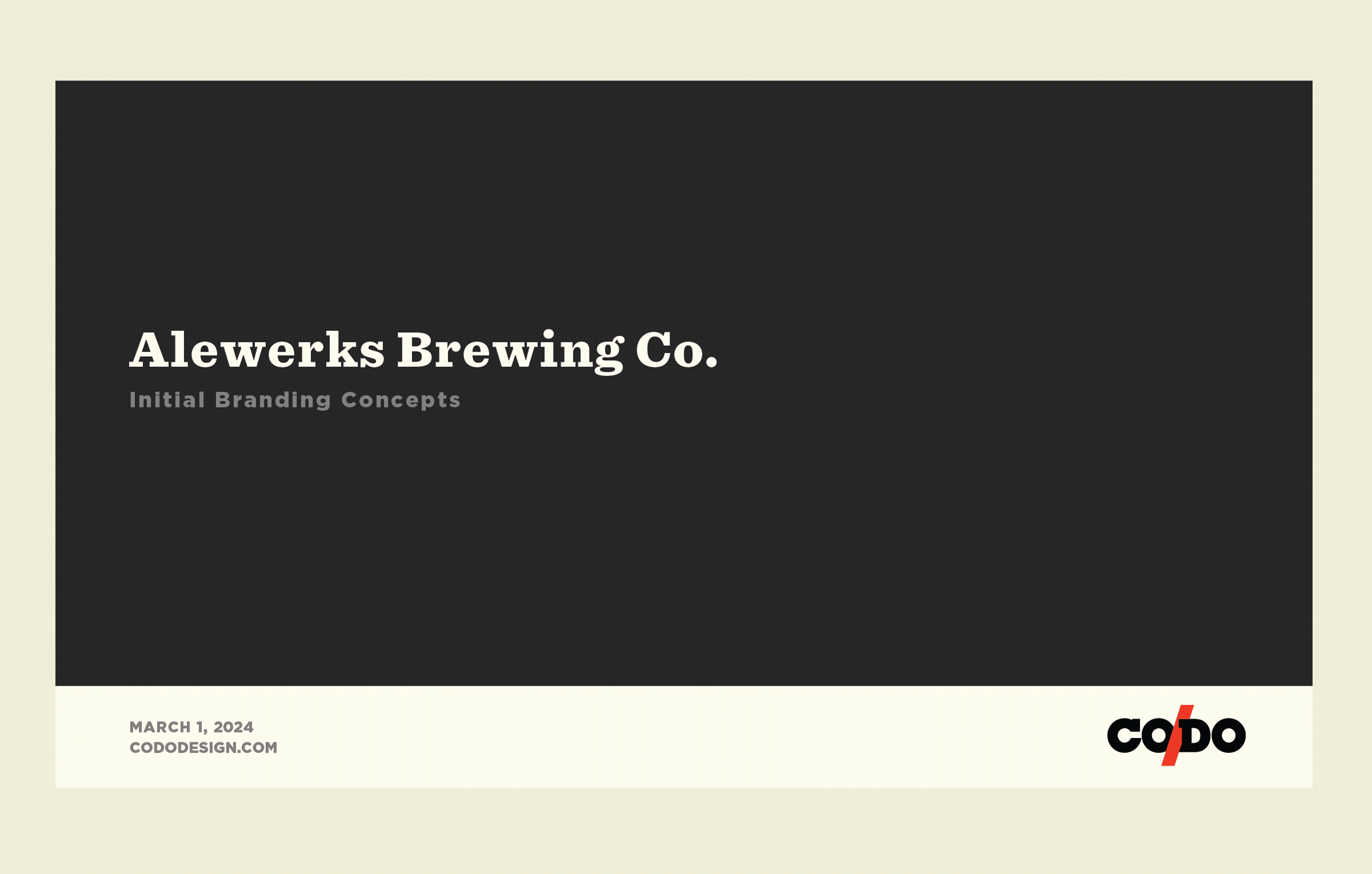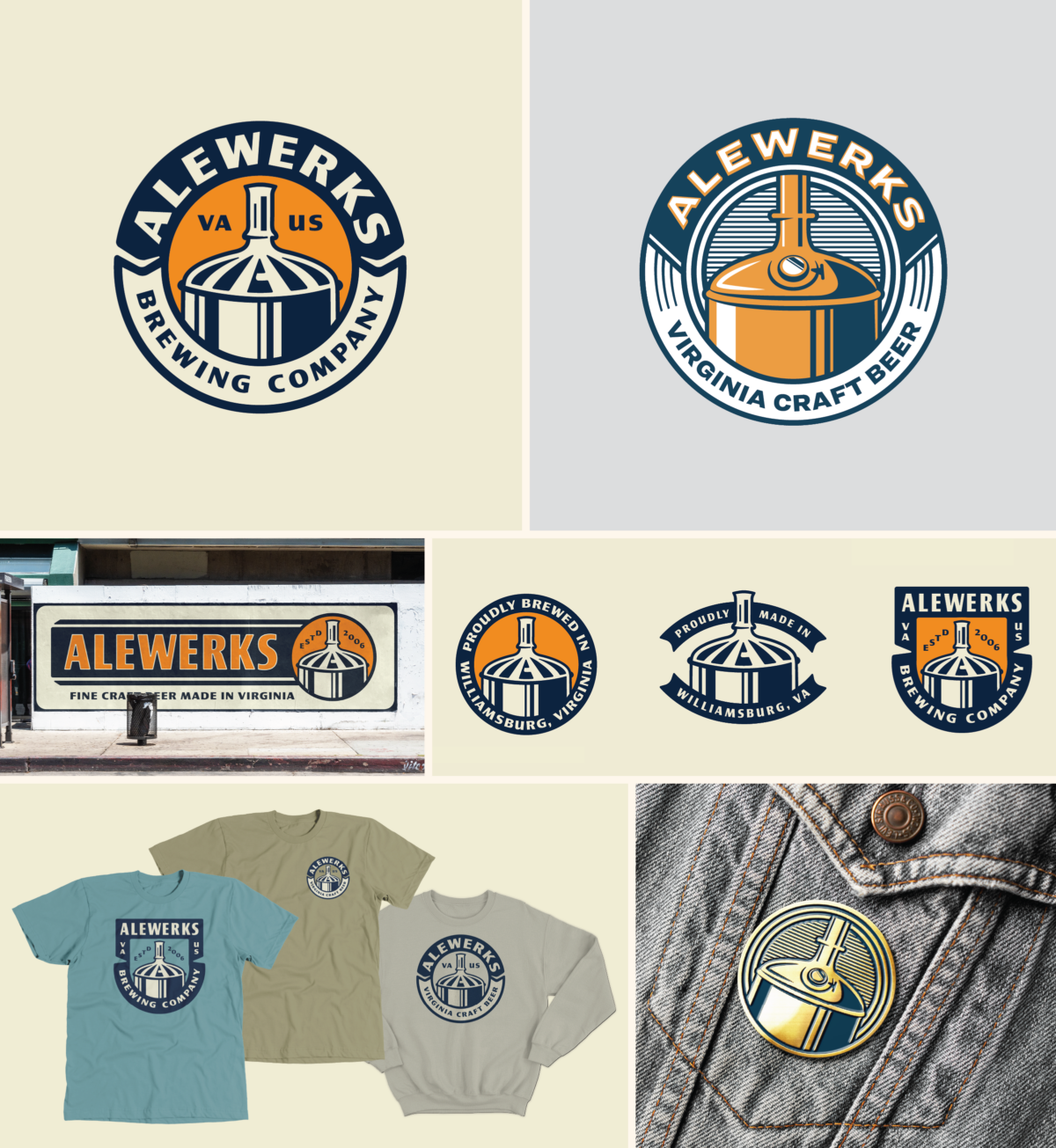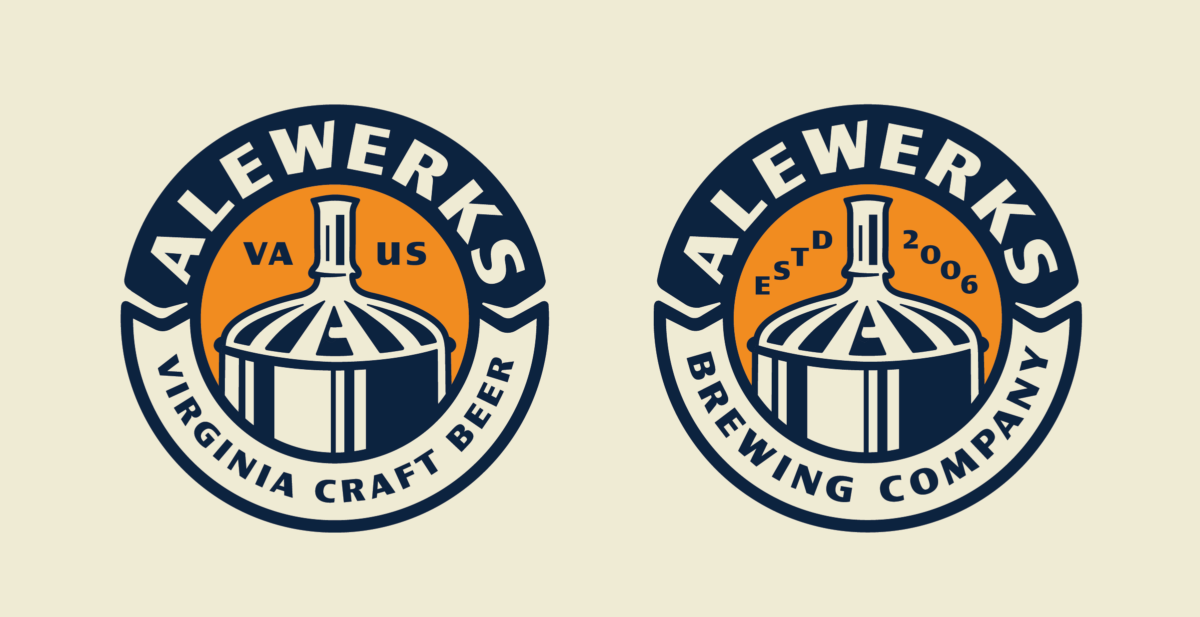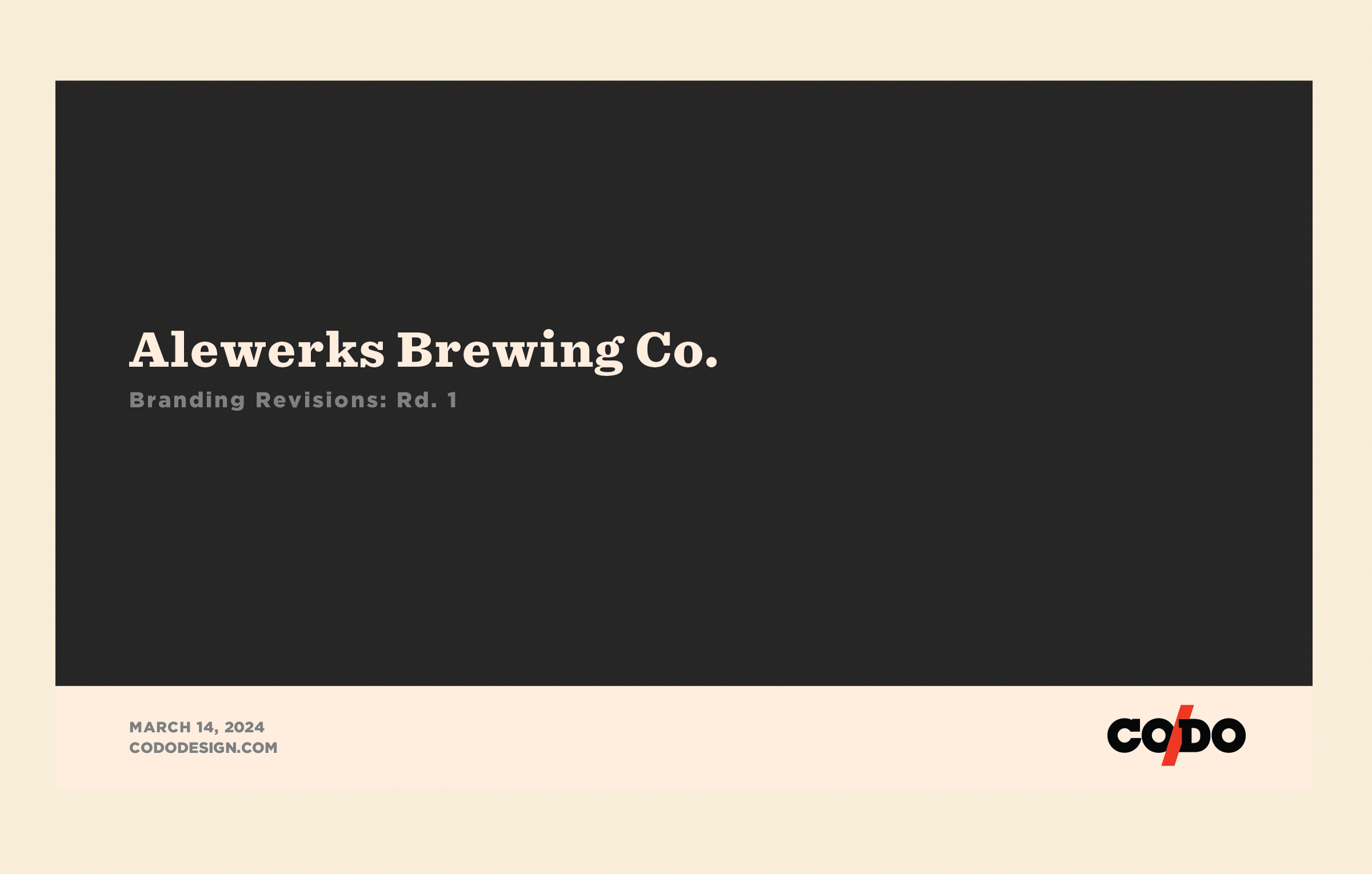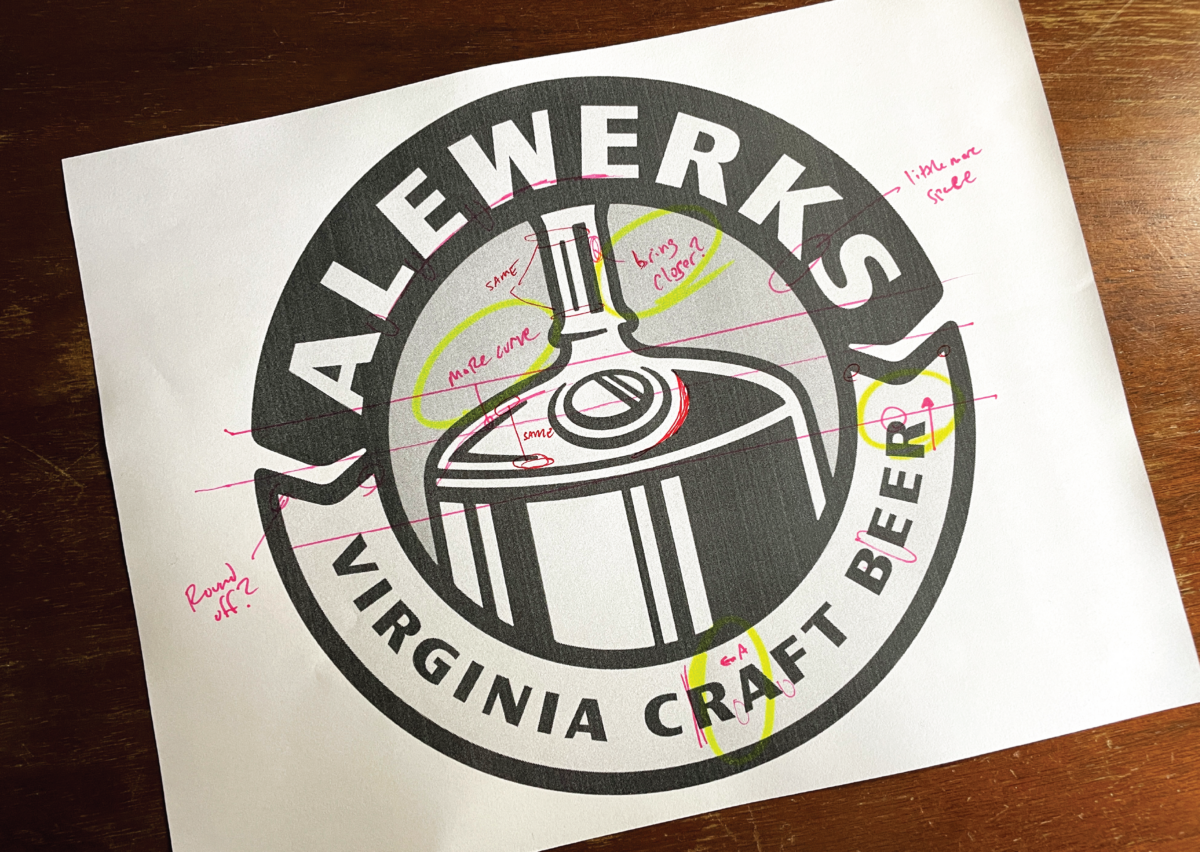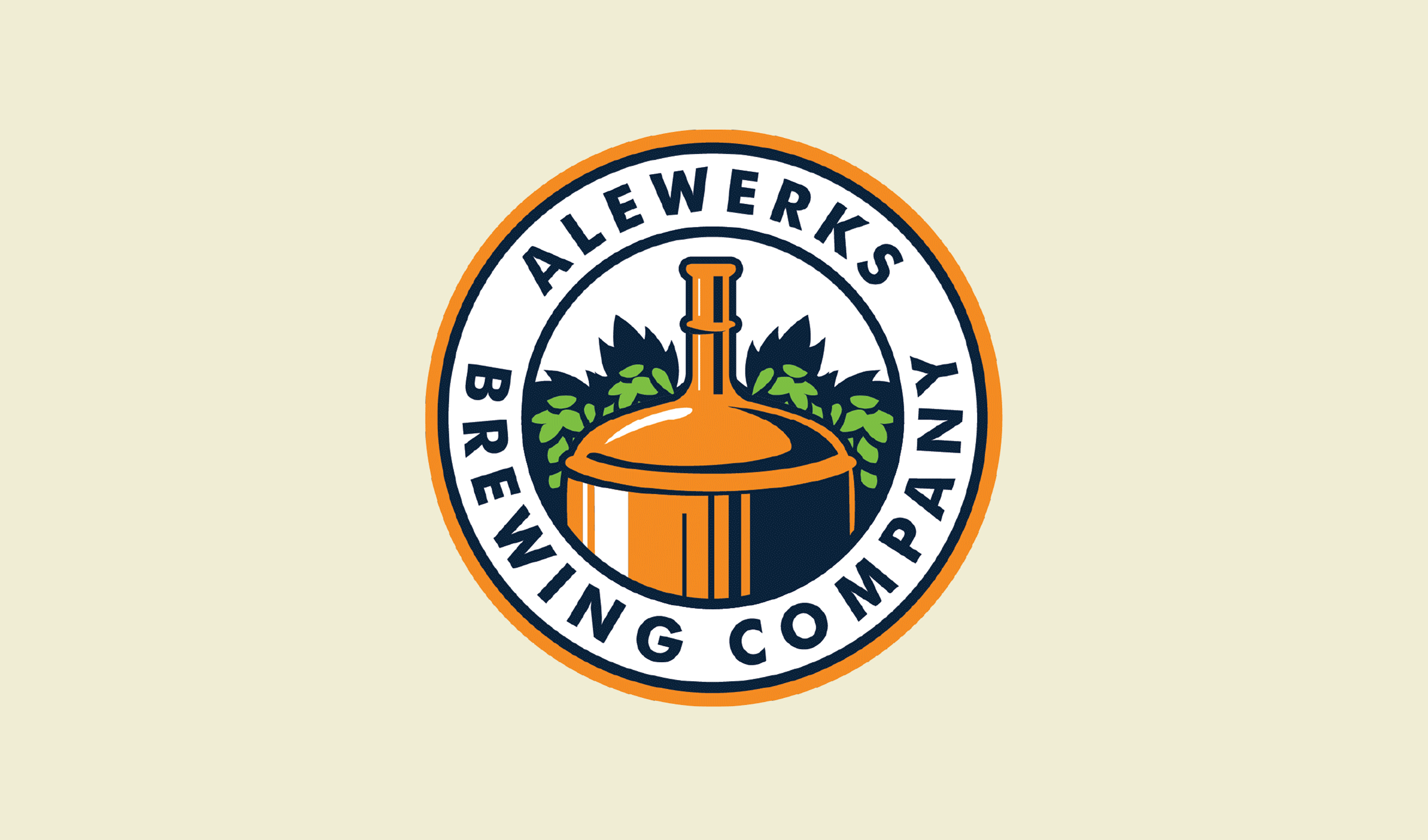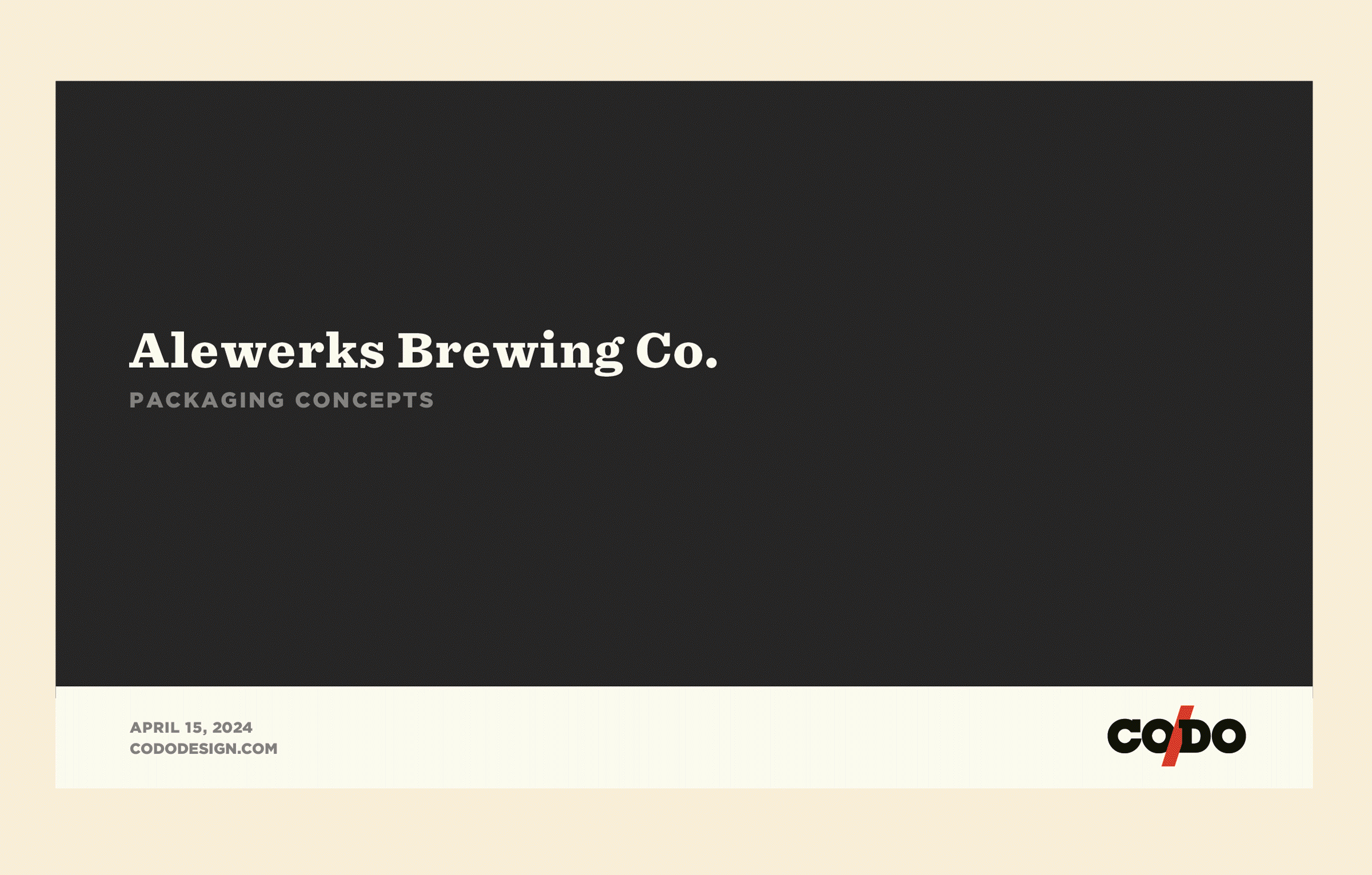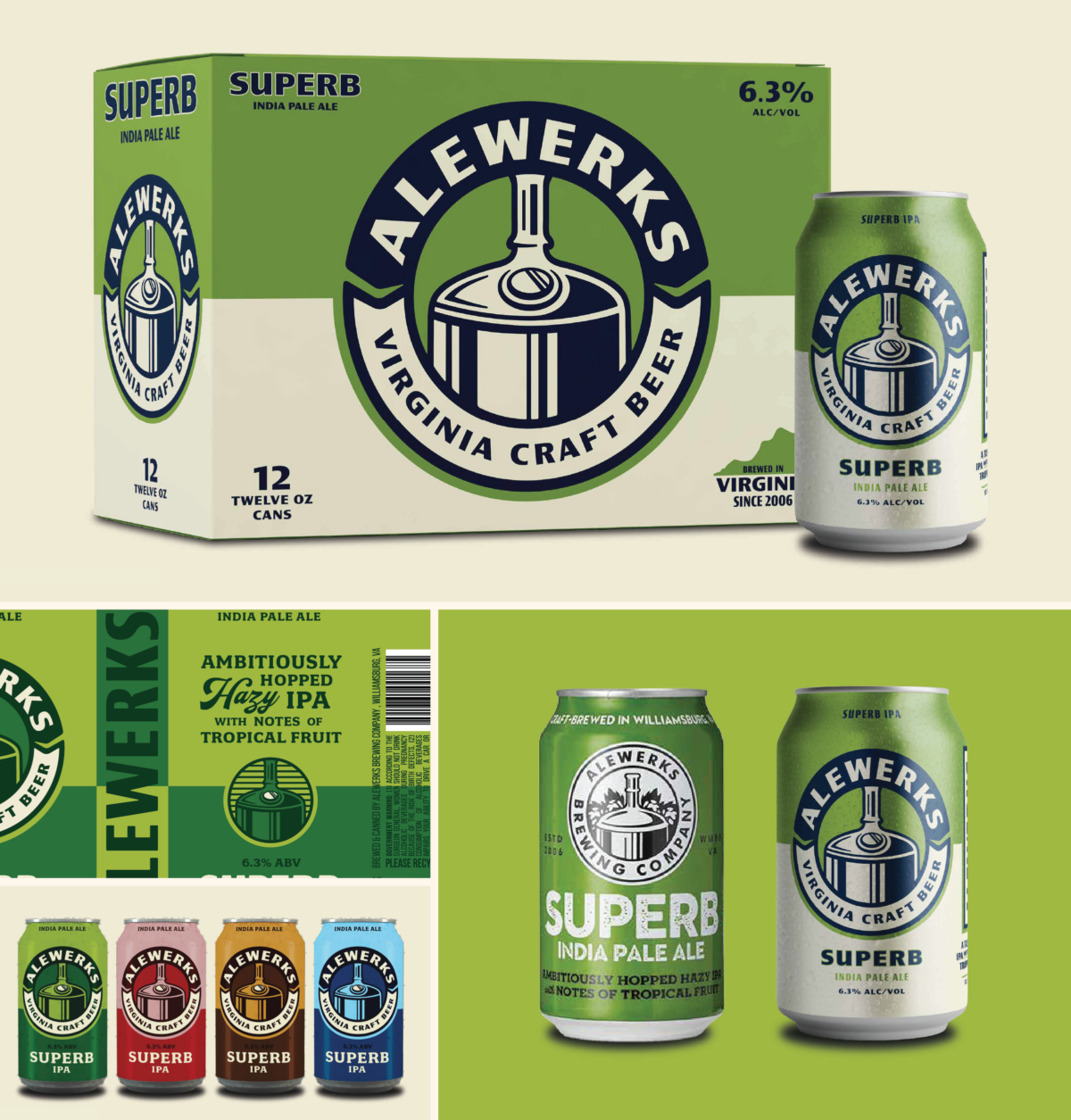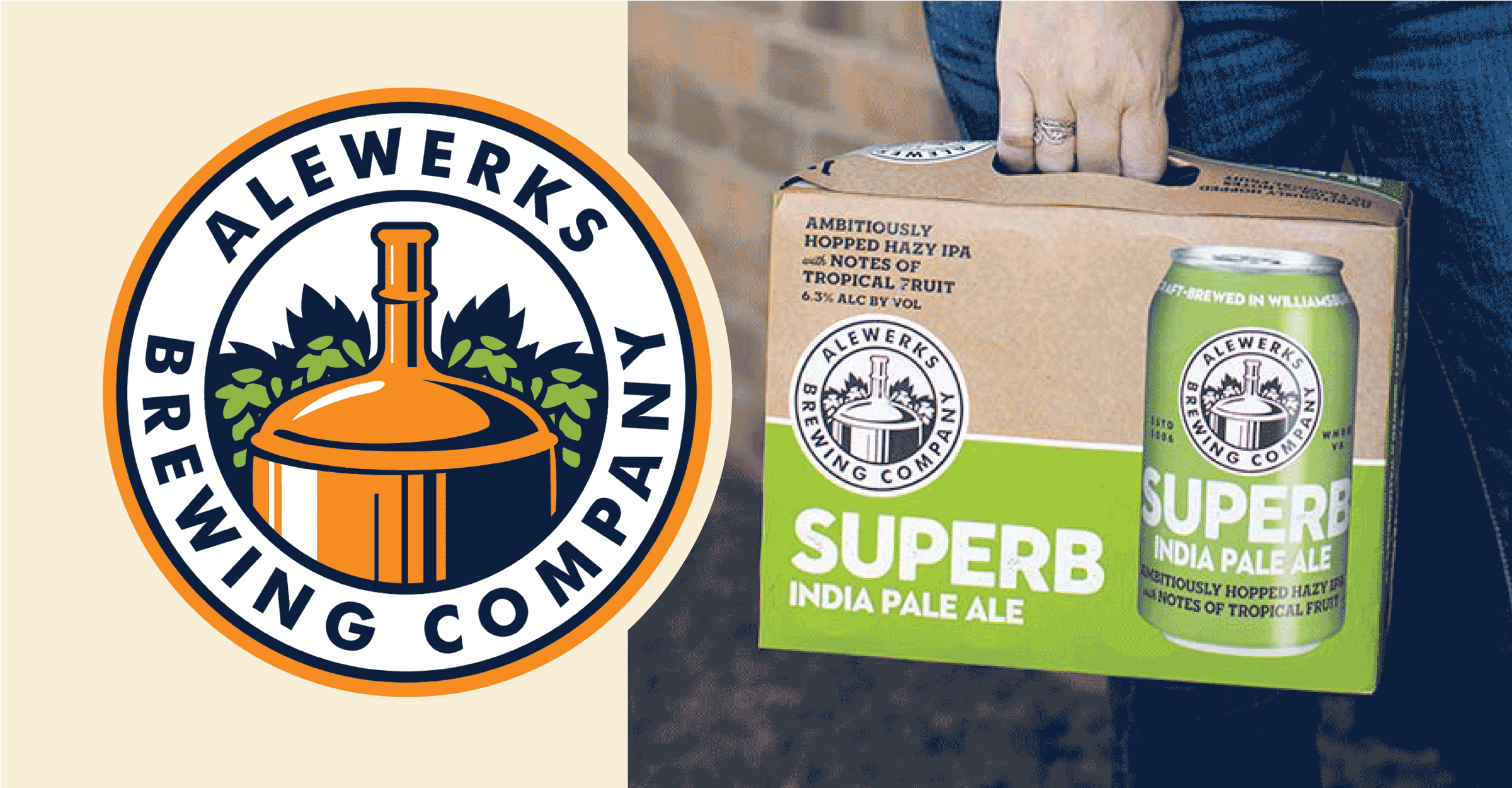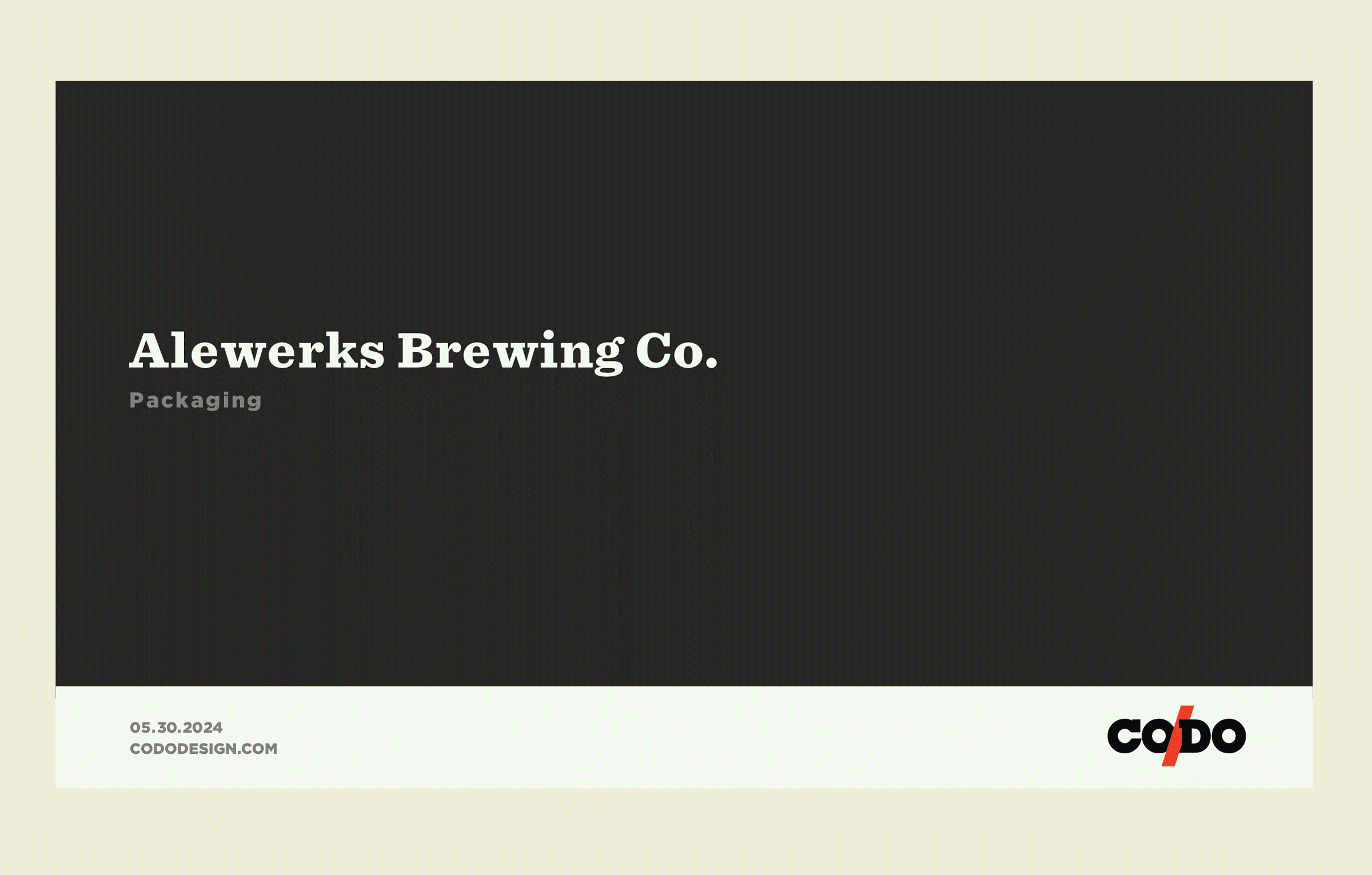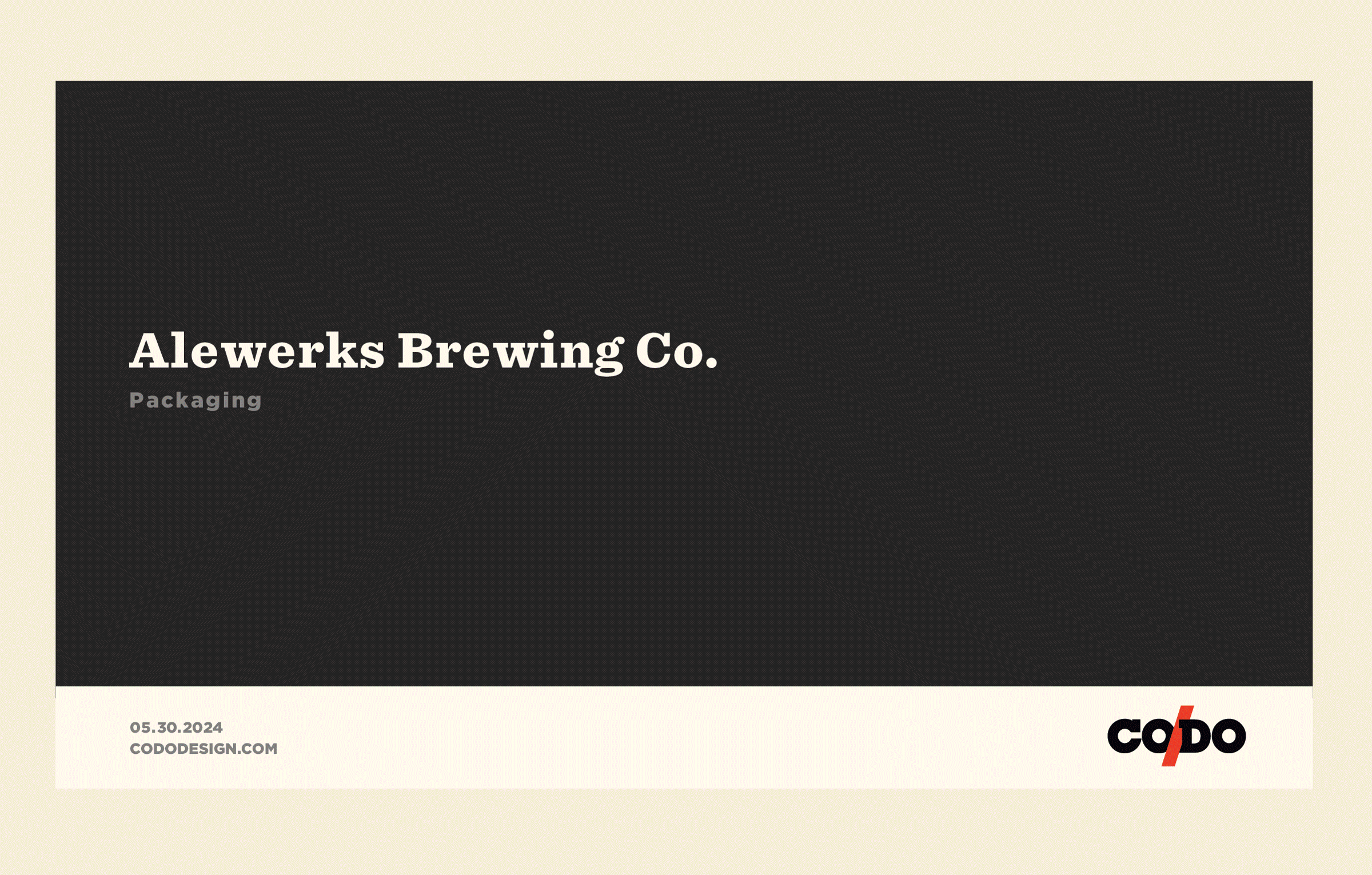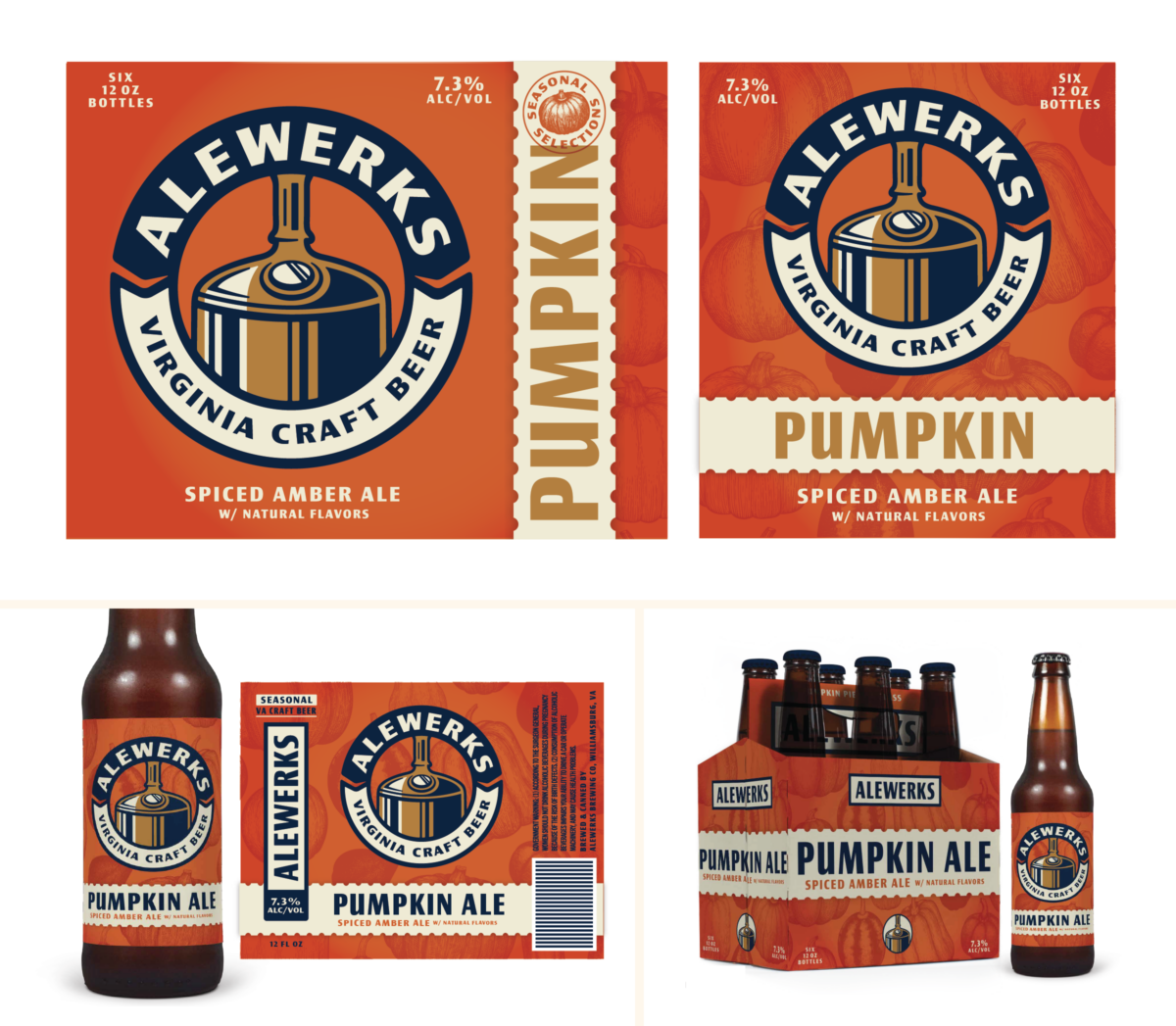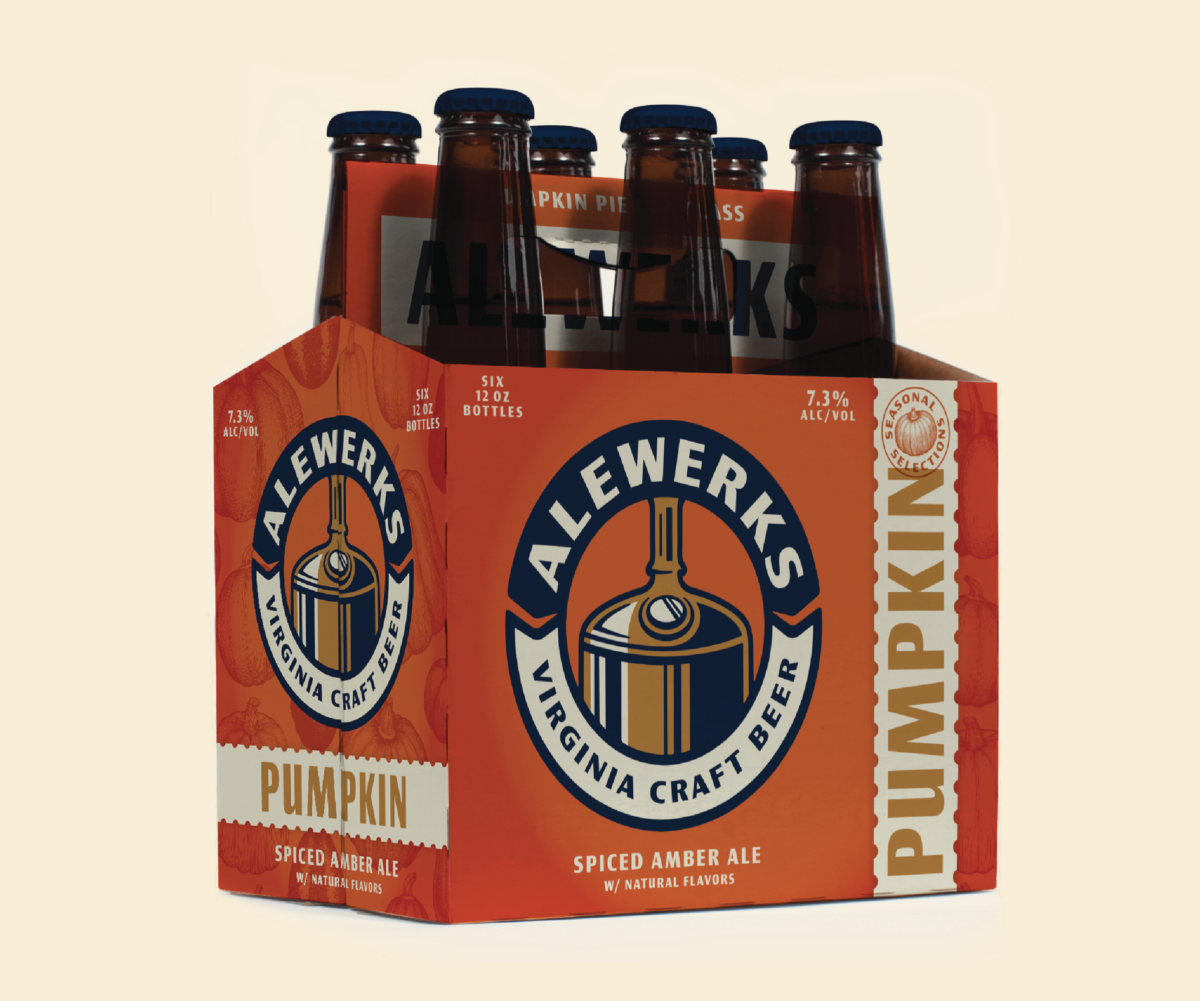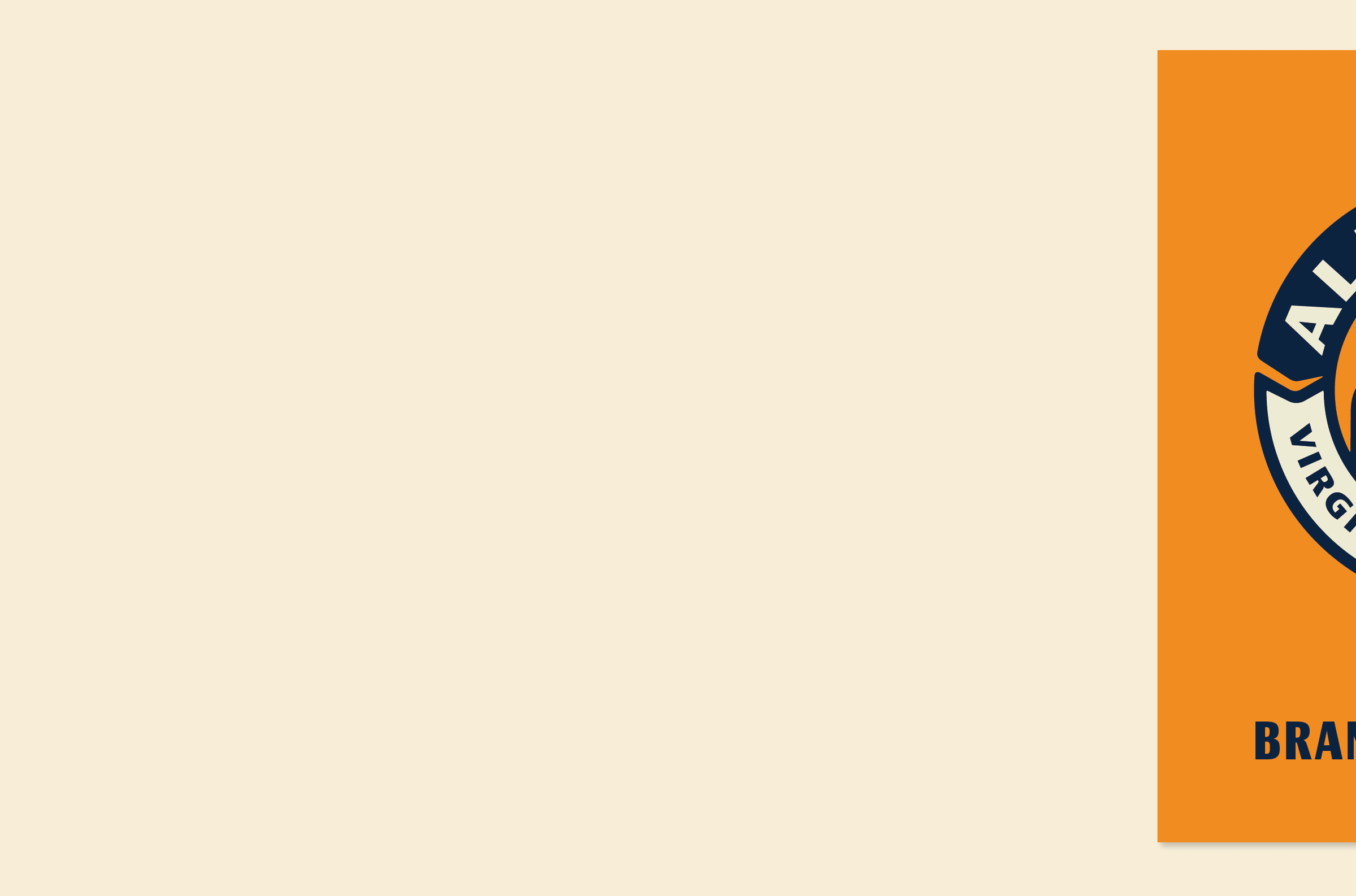Okay, enough editorializing.
I’m excited to walk you through our recent brand refresh work with Alewerks Brewing because they fit my rambling prologue to a tee.
Let’s look at their stats:
– Founded in 2006 in Williamsburg, Virginia as “Williamsburg AleWerks.”
– They’ve grown to be one of the state’s largest breweries.
– They’re known for making phenomenal, dead reliable, classic beer styles, including their regional cult classic Pumpkin seasonal.
– They’re also a brewer’s brewery, with several previous employees going on to build wonderful careers after their Alewerks tenure.
– In 2012, they changed their name to “Alewerks Brewing Co,” and have since undergone a series of smart identity and package refreshes. (See the art below for reference.)
– Their sales are flat (though holding steady at a time when many other breweries are actively losing volume).
—
Taken in aggregate, it’s clear that Alewerks wasn’t facing an existential crisis. They’ve got a well-rounded portfolio. They’re invested heavily in their local community. And they have a squared away team and run a solid business behind the scenes.
Alewerks is, by any measure, a successful brewery . But they ultimately want to move beyond this plateau and get back to consistent, sustainable growth.
Their team determined that the first step on a long path towards that goal is a sweeping brand refresh.
In late 2023, Alewerks reached out to CODO to discuss this revamp. And we’re going to give you a candid look behind the scenes at that entire process today.

